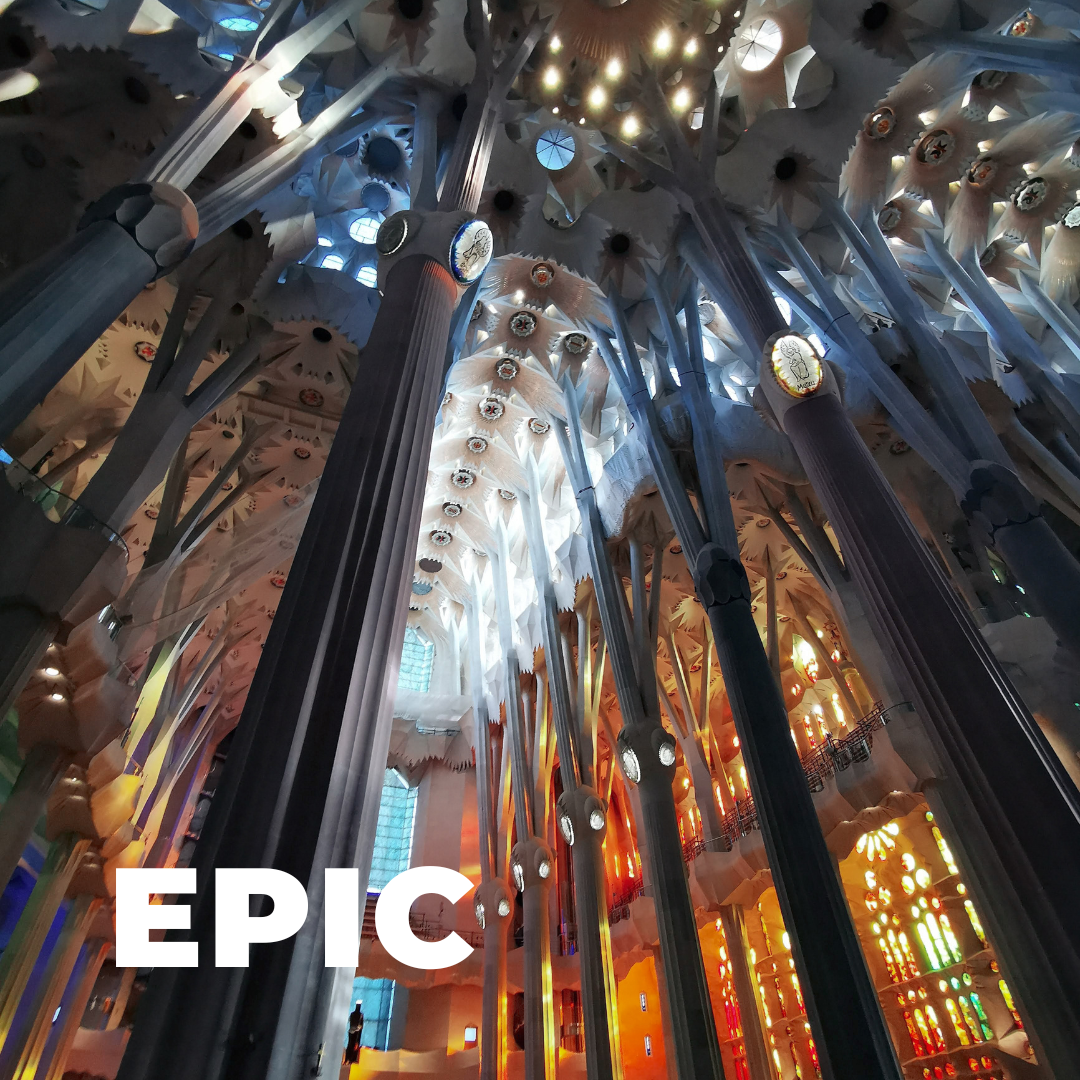
My Client will wait.
— Antonio Gaudí, architect, La Sagrada Familia
A few years ago our little family traveled to Europe for a week-long trip starting in Barcelona—surely one of the most beautiful places in the world. The first night, though a little jet-lagged, the four of us shared a delicious Spanish meal along what's called Las Ramblas, the famous boulevard which runs through the middle of this remarkable city. In the morning, we took a bus into the mountainous Catalonian countryside to the Montserrat Monastery where St. Ignatius, after taking a cannonball to the leg in battle, surrendered his soldier's sword and founded what became the Society of Jesus, better known now as the Jesuits. Returning to the city in the afternoon, we toured a magically eccentric public space called Parc Guell, then as the sun was setting, made our way to Barcelona's most iconic landmark, the church known as La Sagrada Familia.
On March 19, 1882, the cornerstone of what would become this spectacular basilica was laid, dedicated to "the greater honour and glory of the Holy Family, to arouse tepid hearts from their slumber, to exalt the Faith, and to stir up charity..." After some initial disagreement among those in charge (as always seems to happen in big construction projects), a young architect named Antonio Gaudí i Cornet was selected to design and carry out the work. Only now, some 140 years later, is Gaudí's work—this epic undertaking—nearing a conclusion.
Though unfinished, the church is astonishing. With its soaring towers and spires, it will soon become the tallest church in the world. Its east facade tells the story of the Nativity with traditionally fashioned but incredibly detailed sculptures set deeply into its towering walls. Along the west, the story of the Passion is told—again magnificently hewn into the structure itself—but this time by a brilliant 20th century sculptor named Josep Maria Subirachs in a sort of modernist take on the Stations of the Cross. The south facade, still under construction, will evoke the Glory of God, depicting Christ's resurrection, ascension, and the splendor of heaven reaching into the sky. Everywhere the eye lands around the exterior, there is cause for awe and wonder. And if the outside is astounding, the inside takes one's breath away.
Images of the church's interior testify to Gaudí's belief that, "Anything created by human beings is already in the great book of nature." The chapels, the naves, everywhere one's gaze falls reflects years of Gaudí's study and meditation upon the shapes and structures he saw in nature. "The straight line belongs to man," he said. "The curved line belongs to God." Surrounded by cascading arches, knotted vaults, high, colorful windows, spiraled staircases, and fantastical architectural forms called helicoidal columns and hyperbolic paraboloids, entering the church is like walking through an divinely illuminated enchanted forest.
Devoting the last twelve years of his life exclusively to La Sagrada Familia, Gaudí, who had no family of his own, set up his residence onsite, even crafting perfectly-to-scale plaster models of what he saw in his mind the church should and would eventually become. Fully aware he'd never see the completion of his creation, Gaudí did all he could to ensure that the caliber of the continuing work and the final product itself would remain legible as both a majestic hymn of praise to God, and an unmistakable message to the world that God is still with us. That is to say, this gifted architect knew for Whom he was working and took a long view on the matter. When asked when the church would be completed or why it was taking so long, GaudÌ would say simply, "My Client will wait."
On June 7, 1926, on his way to daily confession, Gaudí was hit by a tram along the streets of Barcelona not far from the church. He died three days later. His funeral procession moved through the city slowly, mourners paying their respects, until arriving at the unfinished church where he was laid to rest in the crypt of the colossal sanctuary, which—it's earnestly hoped—will be completed in 2026 upon the one hundredth anniversary of his death.
Do you have an epic-scale work in progress which you realize cannot be finished in a single lifetime? If not, get one. Get one because we probably come to see our lives most fully and accurately when we understand them not merely as our own little tale to tell, but brief stories embedded within God's towering, soaring epic story, just as Antonio Gaudí did.
God — Stir my tepid heart to better see the story of my own life not as some free-standing thing but as a part of the epic, eternal sacred story You are telling. Amen.
— Greg Funderburk





